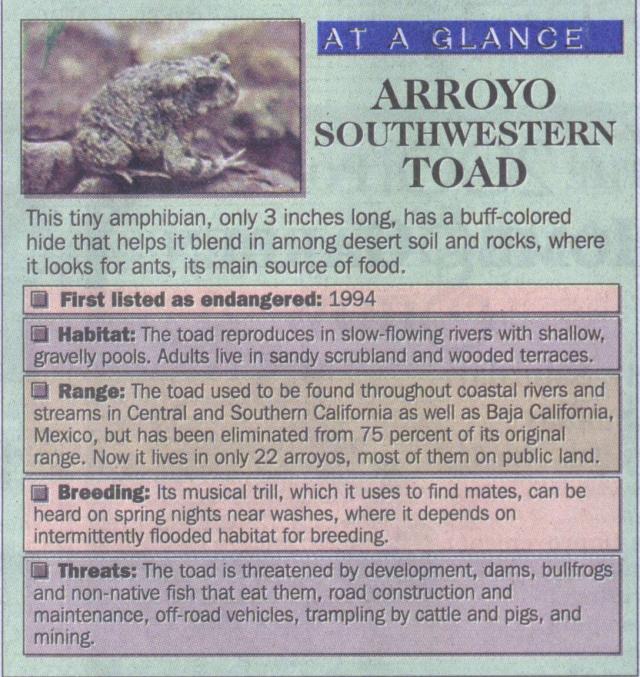 Amphibians vanguards for environment Amphibians vanguards for environment
by Lisa Faught, Staff Writer Pasadena -- In the world of ecology, the decline of the arroyo southwestern toad signals environmental mayhem. More than other animals, frogs and toads, which live in water and on land, are extremely sensitive to changes in the environment. They are more vulnerable to pollution, disease and habitat loss and warn of possible threats to humans. "They are thought to be a good indicator because of their thin skin, so chemicals may show up first in amphibians," said Mickey Long, director of the Eaton Canyon Nature Center. "They are like the canary in the mines." Concern is growing in the environmental community over the rapid decline in amphibian populations and their rising rates of deformities. During the last 20 years, scientists have documented the apparent extinction of the golden toads of Costa Rica., the web-footed coquis of Puerto Rico and the gastric brooding frogs of Australia, according to the North American Amphibian Monitoring Program. The U.S. Fish and Wildlife Service is also working on a nationwide study on the demise of ampphibians. In California, several species of amphibians are on the edge. The arroyo southwestern toad, California red-legged frog, California tiger salamander, desert slender salamander and Santa Cruz long-toed salamander are on the list of endangered and threatened species. Two other species, the mountain yellow-legged frog and the Yosemite toad, are candidates. For the Arroyo toad, a warty creature averaging two to three inches in lenght with a distinctive call, the loss of its habitat has limited its living quarters to about 22 acres in California. The toad, which lives in shallow pools and sandy streams, has los an estimated 75 percent of its habitat to dams and other construction, according to the Fish and Wildlife Service. Other factors affecting the toad include the introduction of plants and predatorrs not native to California. Arundo and tamarisk, for example, can grow densely enough to block the toads from foraging. Bullgrogs and sunfish also feed on the eggs of the arroyo toad. "Frogs can seem insignificant, except that they're food for others and they eat insects, so they're definitely part of the ecosystem," Long said. Lisa Faught can be reached at (626) 578-6300, Ext. 4496, or by e-mail at lisa.faught@sgvn.com.
|
| Agencies oppose endangered listing for arroyo toad |